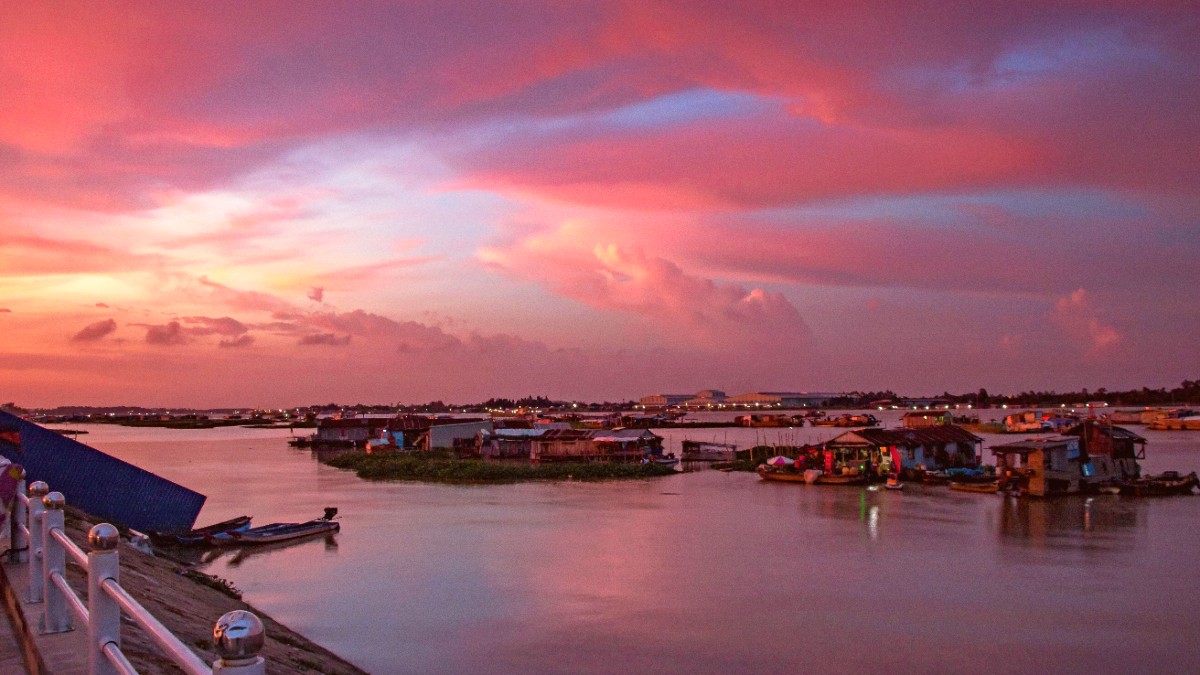
Mekong Delta, Vietnam
The island spans approximately 574 square kilometers (222 square miles), stretching about 50 kilometers (31 miles) north to south and roughly 25 kilometers (16 miles) wide at its broadest. Over half of Phu Quoc's area falls under protection as Phu Quoc National Park. This park safeguards the island's lush tropical forests, diverse flora, and various wildlife. The island's geography includes low mountains, rolling hills, and a long coastline with many beaches. The interior features rich soil that supports agriculture, notably pepper plantations.
Phu Quoc's position in the Gulf of Thailand creates calm waters and distinct weather patterns. It has fewer direct typhoons than Vietnam's eastern coastline.
Its proximity to Cambodia presents a potential gateway for multi-country travel plans. The island's development balances tourism growth with natural landscape protection.
Phu Quoc's history is layered, marked by contestation and transformation. Both Vietnam and Cambodia claimed the island at different times. This historical dispute reflects its strategic location for trade routes and military operations. The island has long served as a haven for fishermen and a trading post, developing its distinct identity.
A significant chapter in Phu Quoc's past involves its role during the Vietnam War. It served as a large prison camp, holding captured Viet Cong soldiers. The conditions were harsh, and the prison became a symbol of wartime suffering. Today, Phu Quoc Prison operates as a museum. It offers a sobering look into this period of history, honoring those imprisoned there.
Following the war, Phu Quoc remained a quiet fishing island for many decades. Its natural beauty was largely undiscovered by international tourism.
Recently, the Vietnamese government recognized the island's potential. They designated it a special economic zone. This designation strives to accelerate tourism development and attract foreign investment.
This policy transformed Phu Quoc from a sleepy outpost into a rapidly developing hub. Modern resorts, improved infrastructure, and new attractions now coexist with traditional fishing villages and pepper farms.
This blend of old and new shapes the island's unique character.
Visitors explore these historical layers, gaining a richer understanding of the island beyond its beaches.
When visiting historical sites like Phu Quoc Prison, approach with respect. These places carry deep meaning for the local people.
Modern resorts, improved infrastructure, and new attractions now coexist with traditional fishing villages and pepper farms, shaping the island's unique character.
This balance maintains large areas of protected natural environment alongside new development.
This blend creates a dynamic and appealing destination for a wide range of travelers.
The island features lush tropical forests, especially within its large national park. It boasts white sandy beaches, some stretching for kilometers, offering serene spots for relaxation and stunning sunset views.
The island's economy traditionally relied on fishing and agriculture. Fishing remains a core industry, with bustling local harbors like An Thoi showing daily catches. Agriculture thrives, especially with the cultivation of black pepper. Phu Quoc pepper is a reputation for its distinct aroma and flavor. Another famous product is Phu Quoc fish sauce (Nuoc Mam Phu Quoc). You can visit factories to see its traditional production.
Pristine beaches, dense forests, and clear waters abound.
Traditional fishing villages, historic prison, and local markets await.
World-class resorts, theme parks, and improving infrastructure are present.
Whether you seek quiet beach days, underwater exploration, a taste of local life, or family entertainment, Phu Quoc delivers.